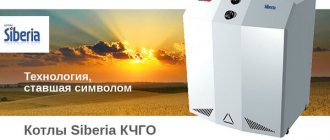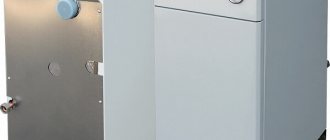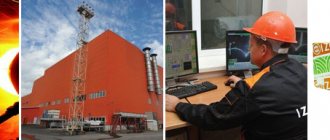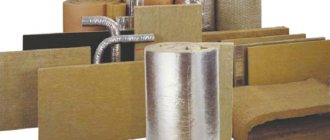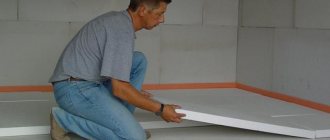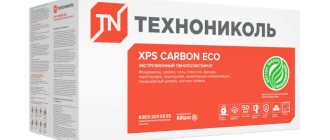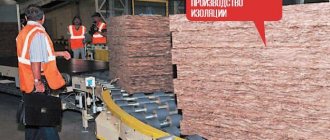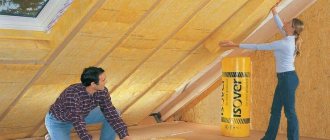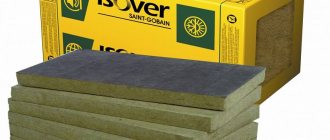What is stone wool?
Mineral thermal insulation includes three types of materials: stone wool, glass wool and slag wool. The difference lies in the raw materials used to produce the product.
Stone wool is a heat and sound insulating material, which is made mainly from the melt of igneous rocks.
One of the main components of raw materials for the production of stone wool are igneous rocks of the gabbro-basalt group and metamorphic rocks similar in chemical composition, as well as marls.
TechnoNIKOL stone wool is a non-flammable insulation material, ideal for thermal insulation, fire protection, and creating acoustic comfort indoors.
Service life of foam plastic as insulation
Another frequently used insulation material is polystyrene foam. It is generally accepted that the shelf life of expanded polystyrene reaches several decades. Manufacturers guarantee the durability of the material for 50 years. However, with the correct insulation procedure, this period can be doubled. This is one of the main reasons why it is so popular.
It should be borne in mind that there are several types of insulation made from polystyrene foam:
- Polystyrene . A material made in the form of foam rubber. Suitable for protecting a room from the inside. Has very high performance characteristics.
- Polyvinyl chloride substances are very elastic. They have a very high durability rating.
- Polyurethane foam . It is considered a durable thermal insulation that will last for quite a long time, hardens quickly, forming a very strong protection that can withstand many external influences.
Based on the above materials, we can conclude that the service life of polystyrene foam is very long and fully lives up to expectations.
What is the difference between TechnoNIKOL stone wool and other types of insulation?
TechnoNIKOL stone wool is a non-flammable material. Stone wool fibers can withstand temperatures without melting up to 1000 ºС. Stone wool products have heat and sound insulation properties due to their open porous structure. The air enclosed in the pores of stone wool has low thermal conductivity and is in a stationary state, which is what determines its excellent thermal insulation qualities. Due to its open porosity, stone wool is a vapor-permeable material, the vapor permeability is approximately 0.25 - 0.35 mg/m·h·Pa. The density of thermal insulation can vary widely from approximately 30 kg/m³ to 220 kg/m³, therefore, the physical and mechanical characteristics also differ, so rigid slabs can withstand a distributed load of 70 kPa (7000 kg/m²!).
Products can be produced with a coating of aluminum foil, kraft paper, fiberglass, etc.
Basalt insulation
Basalt insulation takes a leading position when a homeowner makes a list of thermal insulation materials for insulating his home. To reduce heat losses and improve the microclimate in country houses or cottages, today it is customary to insulate building envelopes, floors, and roofs. To insulate a house efficiently and reliably, you can use materials based on superfine basalt fiber.
Depending on the application and desired technical characteristics, stone wool production processes vary slightly. But the main raw material is basalt crushed stone. Basalt insulation is made from its melt in melting furnaces.
When choosing insulation for your home, you should pay attention to mineral wool. The most popular type of such insulation is basalt-based insulation. Stone basalt wool is made from molten rocks (dolomite, basalt and others). Fiber from natural stone is of higher quality than from glass or blast furnace slag.
Basalt insulation is made from rock melts. This explains its long service life. In addition, basalt wool is a more reliable and effective thermal insulation material, in contrast to insulation made from glass wool or slag wool. If you have seen the preparation of cotton candy, you can imagine the process of turning basalt rock into insulation.
Basalt insulation pros and cons
Products based on basalt wool have a fibrous structure. Numerous stone fibers are randomly intertwined with each other, so there are air pores between them. In the absence of moisture inside the insulation, its thermal insulation characteristics are very high. This is due to the fact that air convection does not occur within the material and, therefore, there is no heat transfer.
There are no chemically active substances or toxic components in stone wool. Good basalt insulation has a very high resistance to mold and mildew.
Basalt fiber can withstand high temperatures, does not burn, and does not change its properties in chemically aggressive environments. Mineral wool is easy to install yourself; it also does not emit toxic substances and is therefore absolutely harmless. This insulation is excellent for insulating floors, roofs, ventilated facades, walls, and for the “wet facade” system.
A special advantage of basalt thermal insulation is its fire resistance. Stone fiber can withstand prolonged exposure to fire and does not melt or smoke. Rigid stone wool slabs retain their shape at high temperatures, helping to slow the spread of fire through a building.
Thermal insulation boards made of basalt insulation are vapor permeable. This is an important advantage of mineral wool insulation over polystyrene foam and polyurethane foam. Thanks to its vapor-permeable structure, mineral wool releases excess moisture from the building, thereby preventing the accumulation of condensation on building structures. Wooden walls do not rot, and metal and concrete structures do not corrode due to the absence of dampness.
Basalt insulation cons
The disadvantage of mineral wool products is that when water gets into the insulation, its thermal conductivity increases significantly, which is why the thermal insulation performance decreases. To prevent moisture condensation in stone wool, manufacturers impregnate it with water repellents, which prevent water droplets from adhering to the threads.
The disadvantages of stone wool include the fact that it contains binding resins, due to which the fibers are held in place. Thanks to resins, stone wool retains its shape, however, with a large amount of such substances, the environmental friendliness of the material deteriorates. Binding components enter the atmosphere and pollute the air in the house.
If thermal insulation materials made from stone wool are installed correctly, these two disadvantages can be easily eliminated. The insulation is located inside the structures, covered with vapor and waterproofing, windproof membranes, as well as finishing materials. Therefore, the negative impact of stone wool on the environment is practically zero.
Moreover, manufacturers strive to use modern formaldehyde resins that do not contain harmful components. Good basalt insulation from a well-known manufacturer, such as TechnoNIKOL or Batiz, is not at all dangerous to human health.
Certified basalt insulation can be used in areas of increased responsibility. The harmfulness of basalt wool is too exaggerated and only poses a health hazard to irresponsible installers who neglect basic protective equipment - gloves and respirators. The material generates dust only during installation of the structure.
Area where basalt insulation is used
Areas of application of stone wool are thermal insulation of external walls, partitions between rooms, floors, interfloor ceilings, and various building structures. This method of insulation is very simple to implement and allows you to create a durable layer of thermal insulation. Basalt insulation has become especially widespread in construction in the insulation of frame houses.
Based on the technical characteristics, we can conclude that basalt insulation can be used in almost any area of construction and production. It can be especially recommended for the facades of buildings with high fire safety requirements. Indeed, is it possible to set fire to a stone?
In private housing construction, insulation can be used to protect pipes, insulate facades, interfloor partitions, and indoor walls. Due to its low water absorption, basalt slabs are recommended for use in baths and saunas. It must be remembered that basalt insulation has more weight compared to expanded polystyrene or fiberglass-based mineral wool.
Density of basalt insulation.
Regardless of the manufacturer, basalt insulation is always made with a different density. Starting from a density of 25 kg/m3, it is not advisable to make less dense cotton wool, as it will crumble in your hands. Finishing with high density, there is such basalt insulation PPZh-200, it is most likely the densest of the existing options.
Each density is used in a specific place for insulating a frame house:
- Density ranging from 25 to 30 kg/m3, usually intended for floor insulation. Since they lie horizontally and do not bear any load. The price for such basalt insulation is always the lowest.
- Density 35 kg/m3 is suitable for sloping roofs.
- Density 45 kg/m3 is well suited for insulating walls in frame structures. High density is necessary for the basalt insulation to withstand the load from the next slab placed on the bottom one.
- Slabs of 50 - 60 kg/m3 have proven themselves well in layered masonry.
- A density of 70 - 80 kg/m3 is required for installation work on insulation of ventilated facades.
- 140 kg/m3 – facades subject to further plastering.
- The highest density of 150 - 200 kg/m3 is required for flat roofing installations.
As you might guess, the denser the basalt insulation, the higher the price, since there is more filler in it. Rigidity is needed only to ensure the resistance of the material to loads. For example, on flat roofs, people can move freely along the screed. However, the thermal conductivity characteristics themselves do not depend on density, and even the least dense material of 25 kg/m3 at a price three times cheaper will retain heat as effectively as 200 kg/m3.
Unfortunately, in most cases, the criteria for choosing basalt wool are limited only by its density, which is correct only to a certain extent. The key parameter by which you should choose basalt insulation is the thermal conductivity coefficient. This parameter shows how poorly the material conducts heat. It turns out that choosing the best basalt insulation means finding a product with the lowest numerical coefficient value.
Specifications
The most important indicator of a mineral slab is its density. Depending on the application, it is necessary to select boards with different densities. For example, if you use insulation of insufficient density for partitions, it will settle over time. Also, to insulate ceilings, there is no need to overpay for high-density slabs.
Due to the fact that the stone wool fibers are arranged in a random pattern, air layers are formed between the layers of these fibers. This is due to the low thermal conductivity of stone wool.
Another distinctive property of this insulation is low hydrophobicity. Basalt insulation practically does not absorb water. Vapor permeability is also high, the insulation does not accumulate condensation. But when installing insulation, it is imperative to use waterproofing and vapor barrier films. This rule cannot be neglected! Then the insulation will definitely last a long time.
Basalt-based insulation is a non-combustible material. General construction slabs can withstand up to +500 C, and special-purpose slabs can withstand up to +1000 C.
Excellent sound insulation is another property of a basalt slab. The slab absorbs sound due to its layered structure and random arrangement of fibers. It is worth noting that basalt-based insulation does not contain limestone. Therefore, this insulation is unattractive to rodents and mold will not form in it. Due to the absence of lime, the insulation is resistant to aggressive chemical attack.
Installation work
Basalt insulation, in measures to organize heat conservation in the house, is more convenient to install when it has the correct shape. It is better to buy basalt insulation in the store in packages of rectangular or wedge-shaped slabs.
This geometry will make it easier to join the materials together without creating problem areas, and the low shrinkage coefficient of basalt insulation will help avoid the occurrence of “cold bridges.”
During installation, basalt insulation must be protected from the negative effects of internal vapors and external moisture. Insulation for a frame house is a responsible task; without monolithic and homogeneous massive walls, the structure is subject to sudden temperature changes.
Internal warm air, tending to leave the room at the boundary of the wall, meets frosty air from outside. A “dew point” is formed at the meeting point. Condensation occurs, and in the future moisture will certainly begin to destroy the basalt insulation.
You can protect basalt insulation using a vapor barrier by closing the material from the inside. Waterproofing and wind protection films should be laid outside, blocking the effects of negative atmospheric phenomena.
It is better not to skimp on the quality of vapor barrier films, and to use only well-known and proven brands: Tyvek, Yutafol, Izospan or Ondutis films. The overlap of vapor barrier membrane strips must be done in such a way as to prevent moisture from entering the basalt insulation.
The weight of basalt insulation is not significant, but it is still worth taking into account when designing the walls of frame partitions. When installing insulation, additional means of fixation should be used: dowels and glue. We suggest learning how to choose the best basalt insulation and how to install it from the video review:
The service life of basalt fiber insulation is so long that in most cases the thermal insulation layer can last as long as the main structure of the building. With proper installation, high-quality basalt insulation will properly perform its functions without requiring replacement.
As sales statistics show, basalt insulation has long become a favorite material among the population. Reliable, easy to install, durable, does not burn or collapse if properly insulated. We advise you to take a closer look at the developments of technologically modern building materials.
How does TechnoNIKOL stone wool reduce noise levels?
TechnoNIKOL stone wool slabs have good sound absorption of airborne and impact noise in a wide frequency range. Sound absorption is provided by the fibrous structure, which effectively dampens the sound wave.
TechnoNIKOL stone wool is a highly porous material with a flexible skeleton. The mechanism of absorption of sound energy is as follows: sound waves, encountering the surface of a porous material, cause the air inside the pores to vibrate. The pores have great resistance to the flow of air passing through them, due to which the sound wave is damped and absorbed when passing through the structure of the material; as a result of viscous friction, part of the sound energy is converted into heat.
Also, TechnoNIKOL stone wool slabs are used in the construction of floating floors; due to the high sound insulation characteristics (relative compression and elastic modulus), the material effectively reduces impact noise.
In what soundproofing structures can TechnoNIKOL stone wool be used?
TechnoNIKOL stone wool helps combat all types of noise – both airborne and impact. In the “application” section on the website www.teplo.tn.ru you can see various solutions for sound insulation that use stone wool-based material:
- to combat airborne noise, suspended ceilings, joist floors, partitions and internal soundproofing lining are used;
- to combat impact noise - floating floor systems and floors with joists.
TechnoNIKOL Corporation received a conclusion from the Scientific Research Institute of Building Physics (NIISF RAASN) on the topic: “Measurement of sound insulation properties of structures using stone wool, production, which reflects the test results of the above-described sound insulation solutions indicating noise reduction indices in dB.
It must be remembered that sound insulation is a whole set of measures aimed at achieving acoustic comfort. First of all, you need to find out the source of the noise.
Sometimes the source itself is located outside the building, but often the cause is located inside, for example: ventilation systems, pumping equipment, elevators, garbage chutes and other engineering equipment, noisy neighbors. Only then should the necessary soundproofing measures be taken.
Main characteristics of mineral wool
Before using mineral wool for insulation, many people want to get to know this material better, so they are looking for a detailed description of it. Below is a list of the main characteristics of such wool, which will allow you to fully evaluate its performance properties.
Return to contents
Thermal insulation and noise absorption characteristics
Table of properties of mineral wool.
Mineral wool has a very low thermal conductivity coefficient. It is within the following limits: 0.038-0.045 W/K×m. Thanks to this important property, just a 10-centimeter layer of mineral wool replaces 117 cm thick brickwork or a 25 cm thick solid wood wall. The high thermal insulation of this material is achieved due to the presence of numerous air pores and channels in it, which amount to about 95% of its total volume.
Comparative characteristics of the service life of insulation materials table
There are many types of insulation, but today we will take a closer look at the most budget-friendly and reliable options. These include:
- Mineral wool.
- Basal wool.
- Styrofoam.
| Name | Life time |
| Mineral wool | 25-40 years |
| Basal wool | 40-50 years |
| Expanded polystyrene | 30-50 years |
| Polyurethane foam | 20-50 years |
| Foam glass | 80-100 years |
The first type is called stone . It has a fairly high level of quality, as it is made from basalt stone. Its cost is much higher, but both the quality and the period of suitability meet expectations. According to statistics, mineral wool is used most often in construction. Duration of operation is about 50 years. But this figure is still disputed, and it has several nuances. At the moment there are two types of mineral wool.
The second is slag . This means that water practically cannot penetrate into it, and the material itself is quite dense. Accordingly, it is made from slag from the metallurgical industry. It is significantly inferior to the previous one in price, quality, and service life. In addition, it is not resistant to sudden temperature changes and may become deformed after a certain time. But despite this, it is often used as the best option if the construction is temporary or less significant.
It is worth noting that this substance has two important advantages:
- Non-flammability . You don’t have to worry that the material is not susceptible to fire from metal tiles, which can heat up to high levels in extreme heat. And also other effects of high temperatures will not pose a threat to the insulation, and therefore to you.
- Vapor permeability . Izover has the ability to “breathe,” which is also important. The material easily passes all vapors through itself, but at the same time they do not accumulate inside. This property makes mineral wool environmentally friendly, and in combination with thermal insulation it is a huge plus. In addition, no additional treatment is required for condensate.
Basal cotton wool is not inferior in the duration of the action of the previous substance. Manufacturers provide a warranty of over 50 years. A very long time ago, construction began to use insulation made from fibrous material. But the peak of its exploitation has occurred in the last couple of decades. This happened due to the intensive construction of country houses, as well as increased heating prices. This is where the material is very popular.
Over time, the quality of basal wool has improved significantly. Now it is an environmentally friendly and safe product. The main advantages include several aspects:
- Fire safety . The material can easily withstand high temperatures without losing its properties.
- Low hydrophobicity . The substance repels moisture, which significantly increases the service life of the insulation.
- Compressibility . Basal wool is very resistant and does not undergo deformation.
- Chemical resistance . Rotting, fungus, rodents, mold and harmful microorganisms will no longer become a threat to your home.
Despite the coincidence, the materials are of excellent quality, do not deform or crumble. The substances are used everywhere and have many positive reviews. With such insulation, your walls can last for more than 100 years.
How mineral wool is made, its properties
Mineral wool is formed by melting rocks and passing them through the finest dies. The resulting fibers are immediately cooled at the exit from the furnace and wound onto spools. Electrical insulating woven materials are produced from stone fibers, but a certain part of them (usually discards) is cut from the spools and ends up in scutching machines, where wool is produced.
Then the resulting wool is fed under presses, where sheets are formed, rolled into rolls (low density) and slabs (mineral wool of medium and high density).
In its essence and chemical composition, fiber wool remains the same stone (mining material), which is not afraid of dampness, mold, or any other fungi. This is a chemically neutral insulation that behaves calmly when the acid-base environment changes and does not react in any way to the appearance of, for example, rust. Mineral wool is not afraid of temperature changes, it is not prone to fire, and does not conduct electric current.
Where is mineral wool used?
In general, mineral wool is an ideal insulation material that is used for thermal insulation of heating pipelines, water pipelines, and industrial boilers at thermal power plants.
In recent decades, mineral wool has been increasingly used to insulate walls in house construction. If all heat and vapor barrier work is carried out correctly, mineral wool insulation will retain heat for as many years as the walls last. The manufacturer names the service life of mineral wool insulation as 50 years. But in fact, if installation work is carried out correctly, it will last much longer.
What factors destroy mineral wool?
At industrial facilities, even during major repairs, cotton wool cannot be replaced, because the material itself as a whole does not deteriorate, break down or decompose. Breakdowns can occur when steam under pressure forms a hole in the pipe (fistula) and, escaping, sweeps away the insulation. During insulation work, the old insulation is not removed.
Mineral wool insulation is able to withstand a new operational period until the next major overhaul, so it is reused. New material is applied where it has become smaller for various reasons. Only those sections of the insulating layer that, being open, become clogged with dust, dirt and turn to stone, must be replaced. Thus, the first enemy of mineral wool is dust and dirt.
Water
The next enemy of this porous and breathable insulation is moisture in the absence of air. If water or condensate gets into the thermal insulation layer, but does not have an exit, it violates the thermal insulation properties. Vata stops breathing and retaining heat. Therefore, when installing thermal insulation, technological holes are provided through which air enters the thermal insulation layer and moisture is removed.
Service life of insulation, which insulation to prefer
Many competent sources claim that the service life of mineral wool and expanded polystyrene is 25 - 35 years. At the same time, a wall that is insulated with these insulation materials made of brick or concrete lasts more than 100 years. Therefore, the wall insulation must be changed at least 3 times during its service life. Was the insulation chosen correctly, due to which it is necessary to carry out a major overhaul of the building in such a short time?
How long do inexpensive insulation materials last?
The main question is where does the 30-year service life of cheap insulation come from? Today, some mineral wool manufacturers indicate in the technical specifications for individual brands of their products that their service life is 50 years.
Moreover, this figure is not explained in any way; there is only a footnote that today there is no standard for determining the shelf life of insulation materials.
Scientific articles regarding artificial insulation indicate that insulation containing artificial organic substances can last no more than 35 years.
During this period, organic matter is destroyed, the substance ages, and the insulation “cakes” or “dries out.” The main thing is that as a result of this, the insulation loses more than 1/3 of its heat-saving ability. Consequently, mineral wool or expanded polystyrene insulation must be completely replaced within a period of up to 35 years.
How is it in Europe?
Now in European countries, according to legislation, an energy audit of every new home, including private ones, must be carried out after its construction is completed. Based on the results, an energy certificate is issued for the building.
Proven energy savings have a very significant impact on property values in Europe.
Repeated energy audits should be carried out after 25-30 years, after a period equal to the service life of conventional insulation materials. The next one will follow after approximately the same period of time.
As a result, it becomes clear how much the building has lost its heat-saving properties, which enclosing structures and how much they have reduced the resistance to heat transfer, where it is necessary to change the insulating material or carry out other repairs.
Like we have
In our country, such studies are not mandatory, although they are recommended by regulations. As a result, in most cases they are not carried out, and it is not possible to find out exactly the real service life of insulation materials by examining them after many years. It remains to use data coming from abroad, according to which the indicated figures were taken.
It is advisable to carry out energy audits of new buildings and periodic checks of the heat transfer resistance of building envelopes within the time limits recommended by regulations. Then it will be possible to monitor changes in the insulation of the building and carry out the necessary repairs in a timely manner.
When to change insulation
An exact answer to when to change the insulation can only be given by a special examination of the heat-saving properties of the building (energy audit). But since over the past 20-25 years, when the use of insulation materials such as foam plastic and mineral wool began, we have not carried out such examinations, all that remains for subsequent checks is to compare the results obtained with theoretical calculated values. But there are no reliable statistics on the failure of insulation materials.
Accordingly, it is necessary to use recommendations for replacing non-mineral insulation materials within the time limits specified above.
Experts agree that the service life of existing insulation materials with organic components is several times less than that of the enclosing structures that are insulated with them. The use of such insulation materials entails premature major repairs of buildings. How to avoid this?
Dense mineral wool and aerated concrete with a long service life
There is a unanimous opinion that denser mineral wools last longer. Partly because the quality of workmanship is ensured by renowned manufacturers, and partly because denser mineral wool contains less binding resins (in total, mineral wool contains from 3 to 10% organic binders). Denser (more than 80 kg/m3) mineral wool samples last longer.
A successful replacement for mineral wool is now aerated concrete made in autoclaves with a density of not much more than 100 kg/m3. This material has a thermal conductivity coefficient comparable to organic insulation - 0.5 - 0.8 m W/mS.
But most importantly, this is a completely mineral compound, which is essentially a foamed stone, so its service life (in the absence of excessive moisture) is comparable to that of heavy building materials - brick, dense concrete.
The use of insulation without organic matter will eliminate many problems in the future, especially when it comes to insulating multi-layer walls (as walls lined with clinker bricks are insulated),
Low-density aerated concrete is a vapor-permeable insulation material, its use is similar to the use of mineral wool.
Eternal foam glass
Another well-known organic-free insulation is foam glass, which has a service life of more than a hundred years. This insulation has been used for a long time (in particular in the secret weapons sector), it has less heat-saving capabilities compared to effective insulation by about 1.5 times, it does not allow water vapor to pass through it and does not accumulate water.
But its distribution is limited due to the increased price, although it is popular for insulating expensive houses.
Among foam plastics, extruded polystyrene foam stands out for its predicted resistance to harmful factors and durability. It does not accumulate water, does not allow steam to pass through it (similar to foam glass), has a denser structure and has twice the specific gravity compared to foam plastics (over 35 kg/m3).
But due to the higher price, it is used mainly in difficult conditions, in soils, for foundations, plinths, basements. In any case, among plastics it is more recommended for use in terms of “survivability” than other plastics.
Related article: How to make a house wall screed with your own hands
As you can see, to insulate the building envelope, it is better to choose insulation with a minimum of organic substances or without them at all.


